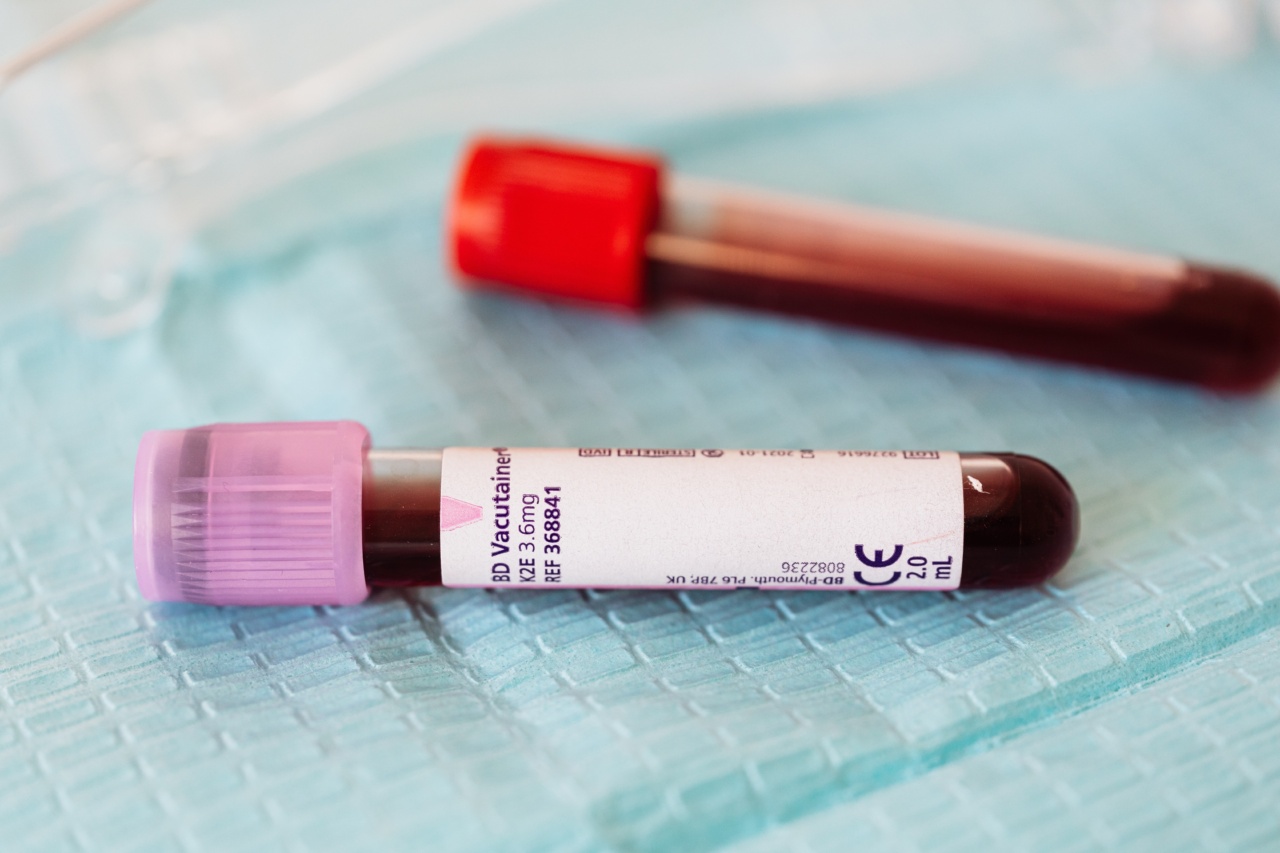Cancer is a leading cause of death worldwide, and early detection plays a crucial role in improving patient outcomes. Traditional methods of cancer diagnosis involve invasive procedures such as biopsies, which can be uncomfortable and costly.
However, in recent years, advancements in technology have led to the development of blood tests that can detect cancer at an early stage.
What is early detection of cancer?
Early detection of cancer refers to the identification of cancerous cells or tumors before they have spread to other parts of the body.
When cancer is detected early, treatment options are more effective, and the chances of survival are significantly higher.
How do blood tests detect cancer?
Blood tests used for cancer detection are often based on the presence of certain biomarkers, which are substances produced by cancer cells or the body in response to cancer.
These biomarkers can be detected in the blood, indicating the presence of cancer and providing valuable information about its type and stage.
Types of blood tests for cancer detection
There are several types of blood tests that can be used to detect different types of cancer:.
1. Liquid biopsy
Liquid biopsy is a non-invasive blood test that detects genetic alterations in cancer cells. It involves analyzing circulating tumor DNA (ctDNA) and other cancer-related molecules in the blood.
Liquid biopsy can be used to diagnose various types of cancer, including lung, breast, colorectal, and pancreatic cancer. It is also used to monitor treatment response and detect recurrence.
2. Cancer antigen (CA) tests
Cancer antigen tests measure the levels of specific proteins called tumor markers in the blood.
Elevated levels of certain tumor markers, such as prostate-specific antigen (PSA) for prostate cancer or carcinoembryonic antigen (CEA) for colorectal cancer, can indicate the presence of cancer. However, it is important to note that elevated tumor marker levels can also be caused by non-cancerous conditions.
3. Circulating tumor cells (CTCs) test
Circulating tumor cell tests detect cancer cells that have detached from the primary tumor and entered the bloodstream.
These tests can provide information about the presence and characteristics of cancer cells, helping in the diagnosis, prognosis, and treatment monitoring of various cancers, including breast, colorectal, and prostate cancer.
Advantages of blood tests for cancer detection
Early detection of cancer through blood tests offers several advantages over traditional methods:.
1. Non-invasive
Blood tests are non-invasive, meaning they do not require any surgical procedures or tissue sampling. This makes them less uncomfortable and eliminates the risk of complications associated with invasive procedures.
2. Early detection
Blood tests can detect cancer at an early stage, even before symptoms appear. This allows for timely intervention and significantly improves treatment outcomes and survival rates.
3. Monitoring treatment response
Blood tests can also be used to monitor the effectiveness of cancer treatments. They provide real-time information about the presence or absence of cancer cells, allowing doctors to adjust treatment plans accordingly.
4. Cost-effective
Compared to traditional diagnostic methods, blood tests for cancer detection are generally more cost-effective. They eliminate the need for expensive imaging tests or invasive procedures, reducing overall healthcare costs.
Challenges and limitations
Despite their many advantages, blood tests for cancer detection also have certain limitations:.
1. False positives and false negatives
Like any diagnostic test, blood tests can sometimes yield false-positive or false-negative results. False-positive results may lead to unnecessary follow-up tests or interventions, causing anxiety and additional healthcare costs.
False-negative results, on the other hand, can delay diagnosis and potentially compromise treatment outcomes.
2. Availability and accessibility
While blood tests for cancer detection are increasingly becoming available, their accessibility in certain regions or healthcare settings may still be limited.
Cost, infrastructure, and expertise required for performing and interpreting these tests can pose barriers to their widespread use.
Conclusion
Early detection of cancer through blood tests is a promising approach that can revolutionize cancer diagnosis and treatment.
These tests provide a non-invasive and cost-effective method for detecting cancer at an early stage, improving patient outcomes, and reducing healthcare costs. However, further research and development are needed to overcome the challenges and limitations associated with these tests and ensure their widespread availability and accuracy.



























